Greenlanders would call the Hatch Cove Kayak—the newest design from David Wyman—a qajariaq, a “kayak-like” boat. Noted designer L. Francis Herreshoff would have called it a “double-paddle canoe.” But perhaps the best description for us might be a recreational touring kayak or “RTK.”I first paddled (all too briefly) David’s prototype of the design just after he launched it in 2023. I brought with me the skepticism of decades of being a hard-core sea-kayak paddler and whitewater racer, to say nothing of my experiences of building and paddling skin-on-frame Inuit kayaks. I was (and still am, I suspect) a kayak snob: if it wasn’t long and skinny, and capable of being rolled, I wasn’t really interested.David Wyman is a naval architect and boatbuilder who, for many years, was professor of naval architecture at Maine Maritime Academy, and is well known for his work with traditional sailing vessels. His personal boats range from small oar-and-sail cruisers to peapods and skiffs. He’d purchased some off-the-shelf small RTK’s to play with on ponds and rivers and to poke around in the waters near his home in Castine, Maine. But, never entirely satisfied, he decided to design one for his own use and to work with Clint Chase of Chase Small Craft to cut the parts for assembly in David’s home shop.
Join The Conversation
We welcome your comments about this article. To include a photo with your remarks, click Choose File below the Comment box.

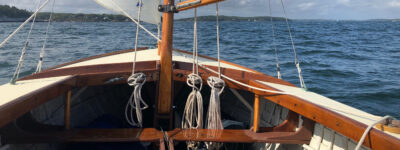
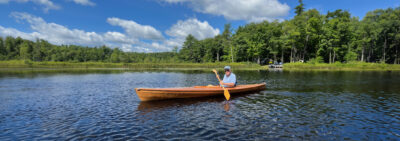
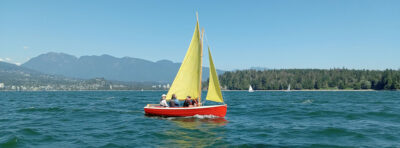

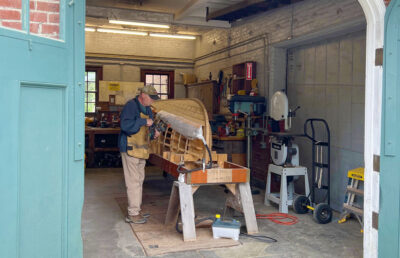
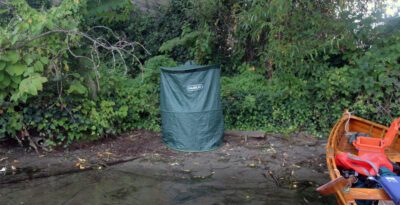


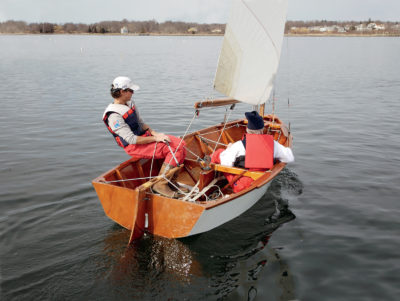
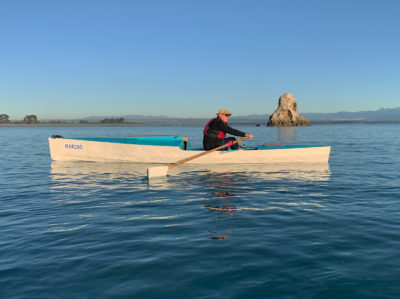
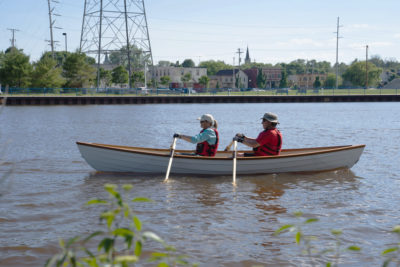

I wondered several ,years ago when David was visiting a maritime client in Seattle if he would address the initial stability issue or was swearing off kayaks forever. I was surprised after paddling with him from Lk Union to dinner at Fisherman’s Terminal in protected waters that David didn’t wish to paddle back. We were in twin 17′ Pygmy Arctic Terns I’d built from kits a few years earlier. His assessment, “Too tippy.”
I should’ve been a bit more attentive as host to my boyhood friend as I had been witness to a climber buddy’s sudden shoulder injury while attempting a quiet riverside launch. And I failed to. inform a son-in-law that kayaks behave differently than canoes (a very quick wet exit).
David’s design solutions (skeg as carry point) are ever a source of, “Why didn’t I think of that?” I carry with me, whenever launching, David’s not original but oft repeated, “the smaller the boat, the greater the fun.” Thanks, Ben, for a terrific review.
Stowing dry bags through cockpit access is a traditional practice. Boats without bulkheads and hatches require it. Besides the inevitable fact that it will be difficult to reach well into the ends of the boat, however, is the risk of having the bags go adrift in case of a capsize. The boat should have some method of securing the bags in place. Even if you should be able to retrieve all the wayward gear, it still would be a challenge to get it stowed properly before reentering the boat.
I paddled with a friend whose boat of choice was a Brose Brothers “Mariner,” a once popular and well-respected kayak out of Seattle. (I remember hearing that the Brose brothers disliked bulkheads and hatches, and would only install them with great reluctance). After one campout, as we were loading up for the next leg, he was almost ready when he discovered a piece of kit that belonged way up forward, which meant he had to unpack everything in order to get that one piece up where it belonged. Of course this can happen with bulkheads and hatches too, but in that case it’s a much less onerous task.
As for spray skirts, I think coastal paddling, where it’s possible to get swept by a breaking wave, absolutely requires them. In other words, the spray skirt is not just for paddle drip.
David, What a graceful and functional beauty! Congratulations on your design that looks like lots of safe fun! And Clint, perhaps you’ll bring one out to the PNW so we can try it?
Slainte,
That would be a good boat to bring out, but I will be flying. It is a great boat…hopefully someone out there will build one.